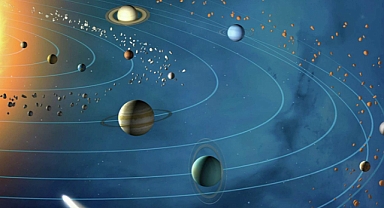While it has no influence on your mood, relationships, or daily affairs, it does offer fascinating insights into how we perceive the cosmos. Here’s everything you need to know about what Mercury retrograde is, why it happens, and what it reveals about our solar system.What Does Mercury Retrograde Mean?
Some publications, such as Glamour, describe Mercury retrograde incorrectly, claiming it happens when Mercury moves slower than Earth. That’s not true. Mercury orbits the sun in just 88 days, traveling at approximately 29 miles (47 kilometers) per second, significantly faster than Earth’s 18 miles (30 kilometers) per second.Mercury retrograde occurs when Mercury appears to reverse its path in the night sky. This apparent motion is an illusion resulting from the relative speeds and positions of Mercury and Earth as they orbit the sun.When Can You See Mercury Retrograde?
This celestial phenomenon isn’t rare. Mercury retrograde typically happens three to four times a year. In 2024, it occurred from April 1–25 and August 5–28. The final retrograde of the year begins on November 25 and ends on December 15, with Mercury appearing against the backdrop of the Sagittarius constellation. However, even this alignment is a line-of-sight effect, not a physical relationship.
What Causes Mercury Retrograde?
All planets orbit the sun in the same direction — west to east — a movement known as prograde motion. Mercury, being the closest planet to the sun, completes its orbit quickly. However, its apparent motion in the sky changes because Earth, too, is orbiting the sun.During Mercury retrograde, the planet’s position relative to Earth makes it seem to slow down, stop, and move backward. In reality, it’s an illusion caused by the differences in orbital speeds.At certain points, such as its greatest elongation (when it appears farthest from the sun), Mercury seems to turn sharply in the sky. This turning creates the illusion of east-to-west motion, which is what we perceive as retrograde.Why Mercury Retrograde Doesn’t Affect You
Despite its reputation, Mercury retrograde has no physical or metaphysical impact on your life. Miscommunications and travel issues happen every day and cannot be attributed to the movement of a distant planet. Astrology might highlight Mercury retrograde for its symbolic value, but it’s essential to separate scientific facts from myths.Instead of panicking over retrograde periods, consider them opportunities to marvel at the intricate dance of celestial bodies. Observing Mercury in the sky is a reminder of the dynamic nature of our solar system and our evolving understanding of it.
Some publications, such as Glamour, describe Mercury retrograde incorrectly, claiming it happens when Mercury moves slower than Earth. That’s not true. Mercury orbits the sun in just 88 days, traveling at approximately 29 miles (47 kilometers) per second, significantly faster than Earth’s 18 miles (30 kilometers) per second.Mercury retrograde occurs when Mercury appears to reverse its path in the night sky. This apparent motion is an illusion resulting from the relative speeds and positions of Mercury and Earth as they orbit the sun.When Can You See Mercury Retrograde?
This celestial phenomenon isn’t rare. Mercury retrograde typically happens three to four times a year. In 2024, it occurred from April 1–25 and August 5–28. The final retrograde of the year begins on November 25 and ends on December 15, with Mercury appearing against the backdrop of the Sagittarius constellation. However, even this alignment is a line-of-sight effect, not a physical relationship.
What Causes Mercury Retrograde?
All planets orbit the sun in the same direction — west to east — a movement known as prograde motion. Mercury, being the closest planet to the sun, completes its orbit quickly. However, its apparent motion in the sky changes because Earth, too, is orbiting the sun.During Mercury retrograde, the planet’s position relative to Earth makes it seem to slow down, stop, and move backward. In reality, it’s an illusion caused by the differences in orbital speeds.At certain points, such as its greatest elongation (when it appears farthest from the sun), Mercury seems to turn sharply in the sky. This turning creates the illusion of east-to-west motion, which is what we perceive as retrograde.Why Mercury Retrograde Doesn’t Affect You
Despite its reputation, Mercury retrograde has no physical or metaphysical impact on your life. Miscommunications and travel issues happen every day and cannot be attributed to the movement of a distant planet. Astrology might highlight Mercury retrograde for its symbolic value, but it’s essential to separate scientific facts from myths.Instead of panicking over retrograde periods, consider them opportunities to marvel at the intricate dance of celestial bodies. Observing Mercury in the sky is a reminder of the dynamic nature of our solar system and our evolving understanding of it.









